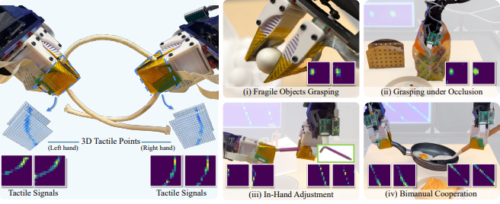2024-11-26 コロンビア大学
<関連情報>
- https://news.climate.columbia.edu/2024/11/26/unexplained-heat-wave-hotspots-are-popping-up-across-the-globe/
- https://www.pnas.org/doi/full/10.1073/pnas.2411258121
- https://www.nature.com/articles/s41558-019-0637-z
地域的な熱波ホットスポットの世界的出現が気候モデルのシミュレーションを上回る Global emergence of regional heatwave hotspots outpaces climate model simulations
Kai Kornhuber, Samuel Bartusek, Richard Seager, +1, and Mingfang Ting
Proceedings of the National Academy of Sciences Published:November 26, 2024
DOI:https://doi.org/10.1073/pnas.2411258121

Significance
Heatwaves can lead to considerable impacts on societal and natural systems. Accurate simulation of their response to warming is important for adaptation to potential climate futures. Here, we quantify changes of extreme temperatures worldwide over recent decades. We find an emergence of hotspots where the hottest temperatures are warming significantly faster than more moderate temperatures. In these regions, trends are largely underestimated in climate model simulations. Globally aggregated, we find that models struggle with both ends of the trend distribution, with positive trends being underestimated most, while moderate trends are well reproduced. Our findings highlight the need to better understand and model extreme heat and to rapidly mitigate greenhouse gas emissions to avoid further harm.
Abstract
Multiple recent record-shattering weather events raise questions about the adequacy of climate models to effectively predict and prepare for unprecedented climate impacts on human life, infrastructure, and ecosystems. Here, we show that extreme heat in several regions globally is increasing significantly and faster in magnitude than what state-of-the-art climate models have predicted under present warming even after accounting for their regional summer background warming. Across all global land area, models underestimate positive trends exceeding 0.5 °C per decade in widening of the upper tail of extreme surface temperature distributions by a factor of four compared to reanalysis data and exhibit a lower fraction of significantly increasing trends overall. To a lesser degree, models also underestimate observed strong trends of contraction of the upper tails in some areas, while moderate trends are well reproduced in a global perspective. Our results highlight the need to better understand and model the drivers of extreme heat and to rapidly mitigate greenhouse gas emissions to avoid further harm from unexpected weather events.
増幅されたロスビー波が、主要な穀倉地帯における熱波の同時発生のリスクを高める Amplified Rossby waves enhance risk of concurrent heatwaves in major breadbasket regions
Kai Kornhuber,Dim Coumou,Elisabeth Vogel,Corey Lesk,Jonathan F. Donges,Jascha Lehmann & Radley M. Horton
Nature Climate Change Published:09 December 2019
DOI:https://doi.org/10.1038/s41558-019-0637-z

Abstract
In an interconnected world, simultaneous extreme weather events in distant regions could potentially impose high-end risks for societies1,2. In the mid-latitudes, circumglobal Rossby waves are associated with a strongly meandering jet stream and might cause simultaneous heatwaves and floods across the northern hemisphere3,4,5,6. For example, in the summer of 2018, several heat and rainfall extremes occurred near-simultaneously7. Here we show that Rossby waves with wavenumbers 5 and 7 have a preferred phase position and constitute recurrent atmospheric circulation patterns in summer. Those patterns can induce simultaneous heat extremes in specific regions: Central North America, Eastern Europe and Eastern Asia for wave 5, and Western Central North America, Western Europe and Western Asia for wave 7. The probability of simultaneous heat extremes in these regions increases by a factor of up to 20 for the most severe heat events when either of these two waves dominate the circulation. Two or more weeks per summer spent in the wave-5 or wave-7 regime are associated with 4% reductions in crop production when averaged across the affected regions, with regional decreases of up to 11%. As these regions are important for global food production, the identified teleconnections have the potential to fuel multiple harvest failures, posing risks to global food security8.



